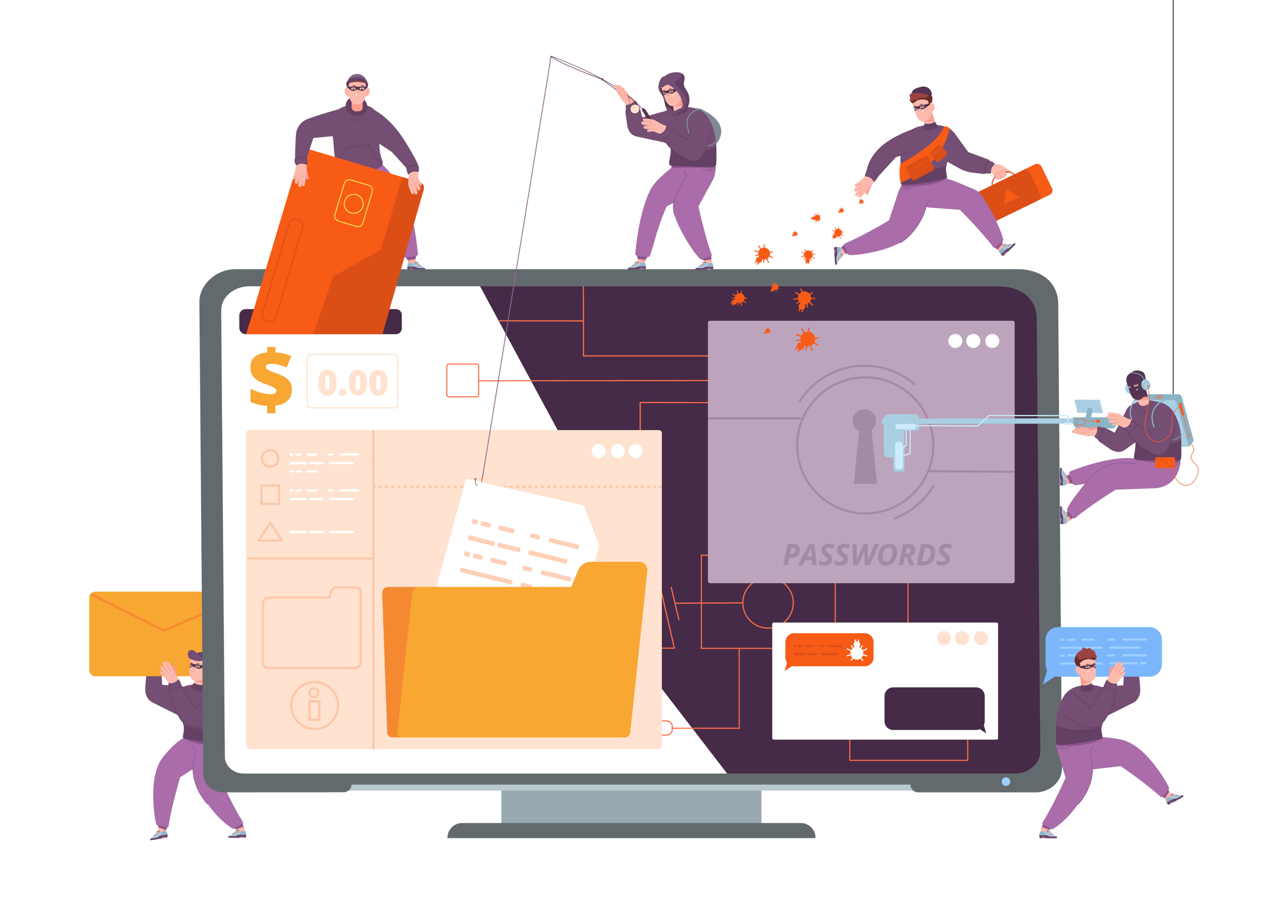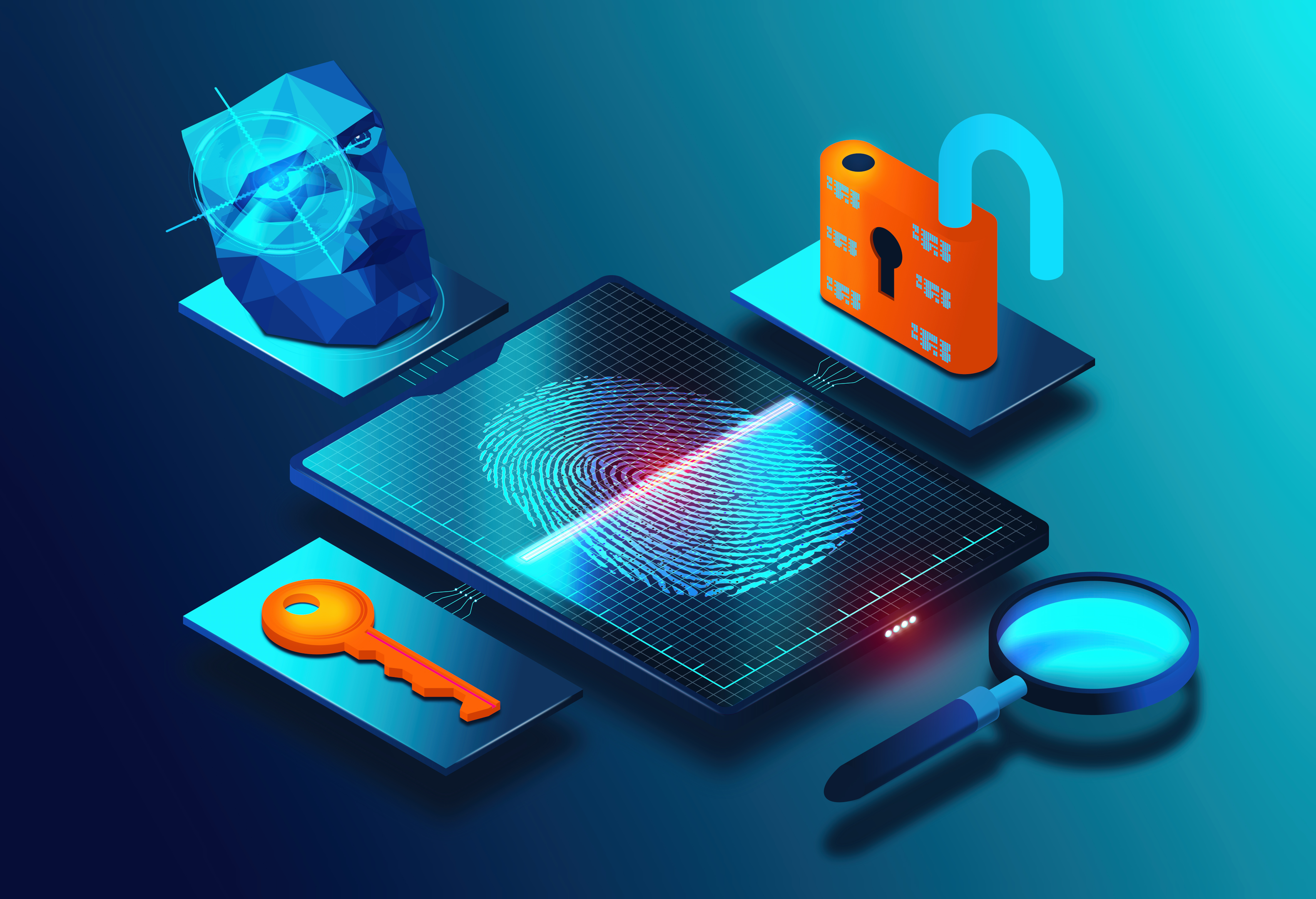
Get free consultation
Use technology to build the business you deserve

A cybersecurity attack can have a devastating impact on a business. Not only can it cause financial implications, but a data breach can lead to the loss of customer data, disrupt business operations, and damage your reputation. Alarmingly, many businesses don’t take the necessary steps to protect themselves until it’s too late. You can’t afford to just assume that cyber-criminals won’t target your business. Even if you are only a small business, you are at as much risk as anyone else, in fact, SMBs are more vulnerable to cyber-attacks that larger corporations. Since many businesses fail to take the millions of potential threats to them seriously, IT managers become responsible for mitigating any cybersecurity attacks, which puts them under immense stress and pressure. However, there are a number of IT solutions that can help relieve the pressure and take care of the business’ cybersecurity for them.
Cybersecurity refers to the protection of computer networks and information from cyber-threats such as malware. The practice is used in individual organisations to prevent unauthorised access to computers or networks. The right security strategy can be effective in protecting against malicious threats that could affect systems or users and steal personal and confidential data. Cybersecurity helps prevent unauthorised use by computer systems or devices.
You should never assume that you are not a target for hackers or other cyber-criminals. Every business connected via the internet needs protection against the countless cyber-threats there are out there.. The reason being that cyber-attacks tend to be automated and aim to exploit the vulnerabilities rather than specific websites and organisations.
The number of cyber-threats businesses are facing today is increasing at an alarming rate. According to a recent study by Forbes, businesses suffered 50% more cyber-attack attempts per week in 2021. This means that businesses need to be more vigilant than ever before in order to protect themselves from potential attacks. Even though it has been identified that organisations are in great danger, Forbes also said that many security executives believe they are unprepared for the threats that lie ahead. So it is no wonder that many IT managers today feel extremely stressed with the responsibility of defending against cyber-attacks.
One of the most common cyber-threats businesses face is phishing. Phishing occurs when cyber-criminals send fraudulent emails or text messages in an attempt to steal sensitive information such as login credentials or credit card numbers. They will often pose as a legitimate company or individual in order to trick their victims into clicking on a malicious link or attachment. Once the victim clicks on the link or opens the attachment, they will be redirected to a fake website where they will be prompted to enter their personal information.
Another cybersecurity threat businesses need to be aware of is ransomware. Ransomware is a type of malware that encrypts a victim’s files and demands a ransom in order for the files to be decrypted. This can be extremely costly for businesses as it can result in the loss of important data or the inability to access critical systems.
A rather new method that hackers are using to infiltrate businesses in 2022 is through third-party exposure. This is when cybersecurity criminals avoid security systems by hacking weaker networks that belong to third parties who have privileged access to the hacker’s primary target. A major example of this was when Facebook, Instagram, and LinkedIn user’s personal data was leaked by hackers who gained access to their networks by breaching a third-party contractor called Socialarks. According to Embroker, over 50% if businesses are more willing to hire freelancers because of the COVID-19 pandemic, meaning more businesses could become vulnerable to third-party exposure in 2022.
It is common for cybersecurity criminals to target organisations through their employee’s mobile devices. Mobile device management solutions were designed to protect company mobile phones from these kind of attacks. However, hackers are now targeting these systems to gain access to the entire network of mobile devices and attack every employee at the company simultaneously. With remote working maintaining its initial popularity during the pandemic, there has been a huge uptick in mobile device usage and employees rely more heavily on their mobiles.

Cybersecurity attacks can have serious implications for businesses, with the most common being:
Additionally, losing client data that the business is supposed to be responsible for can also lead to their clients taking legal action, which causes even more financial loss and further disruption. If a business suffers from any of the above implications after falling victim to a cybersecurity attack, unfortunately it is entirely possible for them to have no choice but to shut down.
Clearly there are many ways a business can fall victim to a cyber-attack, but there are a number of cybersecurity services designed to protect businesses from these kind of threats. Rather than deal with the stress of protecting the business as the IT Manager or Business Owner by yourself, you can trust the following IT solutions to do the job for you.
Managed detection and response (MDR) is a cybersecurity service that uses technology and human expertise to perform threat hunting, monitoring, and response on a 24/7 basis. MDR is extremely effective in rapidly identifying and limiting the impact of threats without the need for additional staffing. Deploying an MDR solution within your business will ensure that any possible threats to your network are found and mitigated before it can cause any damage to the company. A great MDR solution that we would recommend is SentinelOne Vigilance.
Endpoint security (or endpoint protection) is a cybersecurity service that defends endpoints such as desktops, laptops, and mobiles from potential malicious activity. Endpoint security is an essential cybersecurity service because every remote endpoint can be the entry point for an attack. An endpoint is any device that connects to the corporate network from outside its firewall, as well as desktops, laptops, and mobile devices, hardware like servers, switches, digital printers, and IoT devices are also endpoints. Endpoint protection solutions offer a centralised management console from which administrators can connect to their business network to monitor, protect, investigate, and respond to incidents. Having an easily accessible console such as an endpoint protection solution makes it incredibly easy to quickly find out when an endpoint has been compromised and act to defend against the cyber-attack. If you’re looking for an effective endpoint protection service, SentinelOne is a trustworthy solution.
Malicious spam email remains a favourite method among cybersecurity criminals to infiltrate a business. It would be sensible to suggest that you have come across at least one spam email in your life. The difference nowadays is that spam emails are much more sophisticated and very difficult to identify. A spam filter catches every email before it’s delivered into your mailbox and filters out all the potentially malicious messages. In case a legitimate email has been caught by the spam filter, you are able to log on and access your email log to find and deliver emails that should have been sent through. A spam filter ensures that dangerous emails don’t reach employees so there is no chance of them falling victim to an attack. According to IBM, human error is the main cause of 95% of all cybersecurity breaches, so a spam filter is essential. Using a spam filter means you can relax knowing that none of your colleagues will face the potential risk of clicking on a malicious spam email and your business won’t suffer from a cybersecurity attack because of human error. The spam email filter we use and would highly recommend to you is Barracuda.

Only a small number of cyber-threats and solutions are highlighted in this article. If you want to learn more about cybersecurity services, our resource centre provides insights and tips for all things cybersecurity.
Even with the right IT solutions in place to protect your business, it is still a huge responsibility to manage and run the cybersecurity operations for an entire organisation. By outsourcing cybersecurity to an IT provider, you can ensure that your data and networks are protected around the clock by experienced professionals.
If you’re looking for comprehensive IT solutions designed to protect your business from cybersecurity threats, get in touch with us today. We’ll be happy to discuss your specific needs and recommend the best course of action for your business. Don’t wait until it’s too late – act now to protect your business from the potentially devastating consequences of a cybersecurity attack.